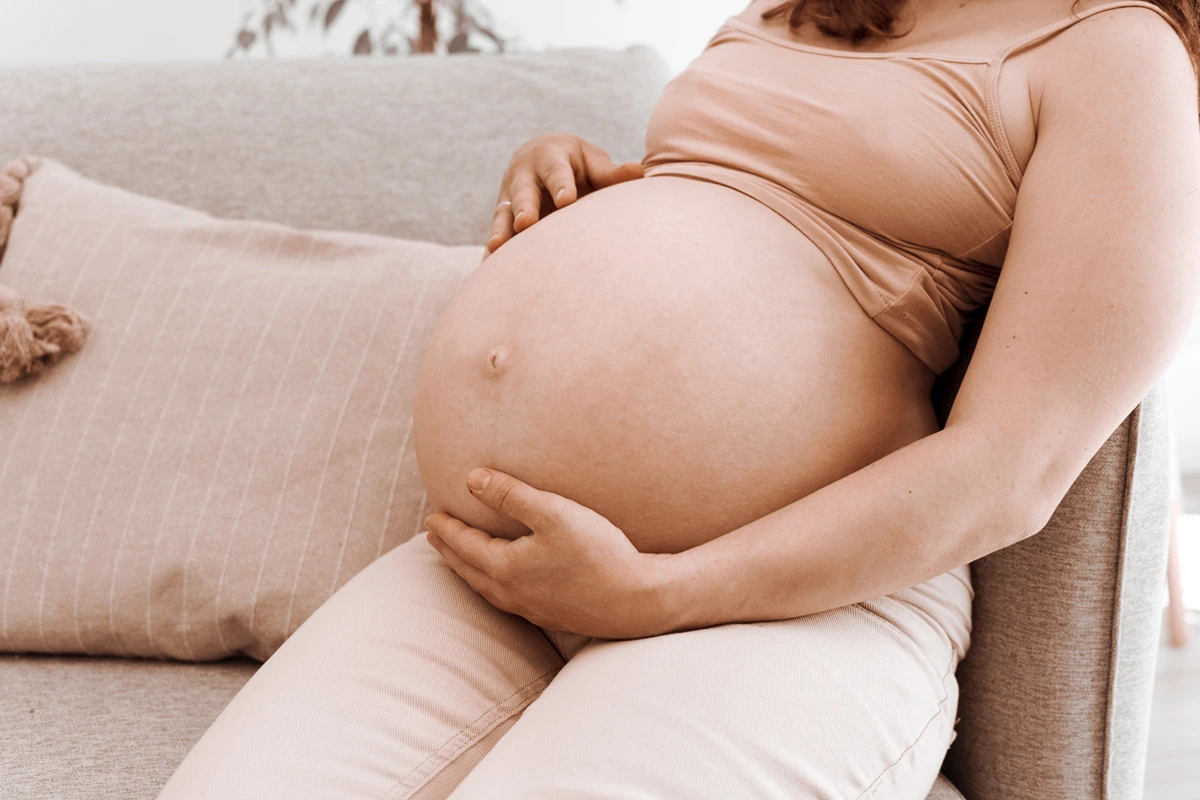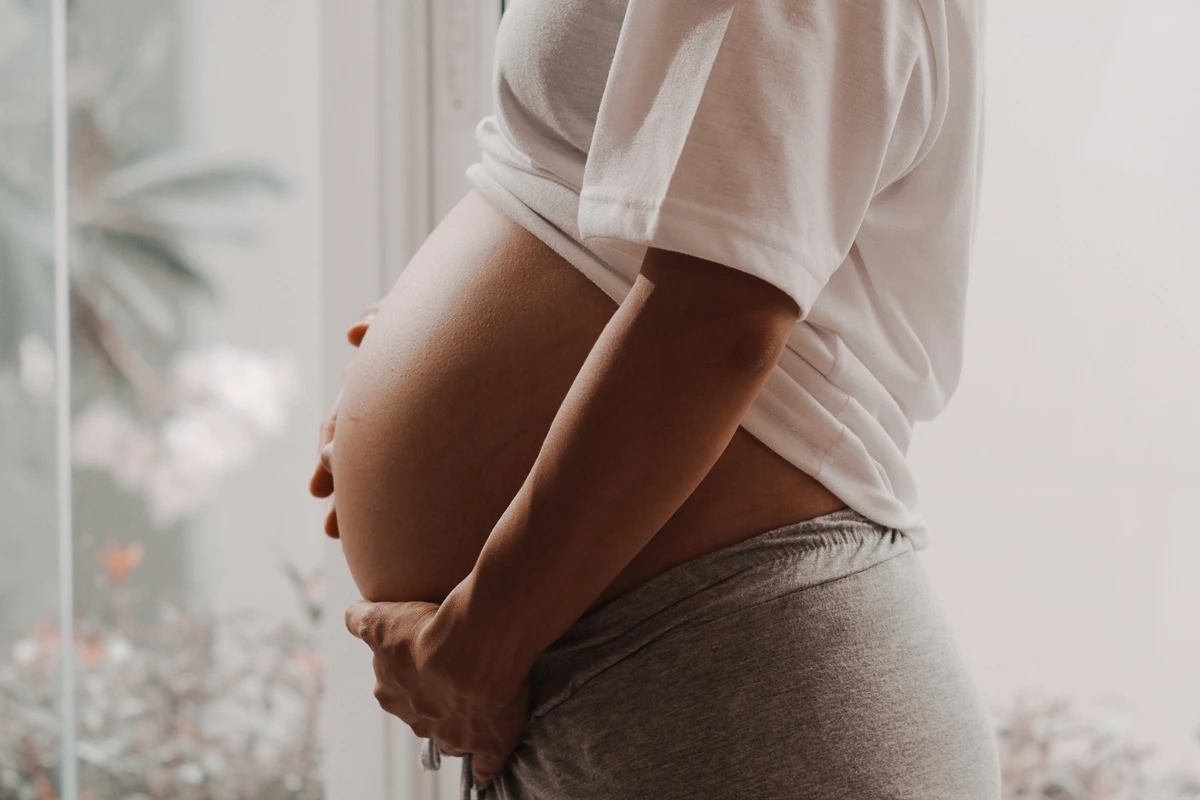The second trimester of pregnancy, spanning from 14 to 27 weeks, is often referred to as the “honeymoon phase” due to the relief from early pregnancy symptoms. During this period, expectant mothers typically experience increased energy and a renewed sense of well-being. The baby undergoes significant development, with the emergence of facial features, the ability to suck and swallow, and the onset of rapid brain growth. Mothers may start feeling the baby’s movements, known as quickening, and the gender can often be determined through ultrasound. Physical changes include a more noticeable baby bump, skin changes such as a pregnancy glow, and possible weight gain. It’s crucial to continue proper prenatal care, including regular check-ups, a balanced diet, and appropriate exercise, to ensure the health and well-being of both the mother and the developing baby.
Table of Contents
ToggleBaby’s development in the second trimester
In the second trimester of pregnancy, the baby undergoes remarkable development, marked by significant milestones. At this stage, the baby’s facial features become more defined, and they develop the ability to suck and swallow. Rapid brain growth is evident, laying the foundation for cognitive functions. Mothers often start feeling the baby’s movements, known as quickening, adding a tangible connection to the pregnancy experience. Through ultrasound, the baby’s gender can usually be determined during this trimester.
Physically, the baby experiences a substantial increase in size, and organ systems continue to mature. Vernix, a protective layer on the skin, begins to form, and fine hair called lanugo covers the baby’s body. These developments contribute to the baby’s readiness for life outside the womb.
For expectant mothers, the second trimester may bring a sense of relief from early pregnancy symptoms. The baby bump becomes more noticeable, and some women may experience skin changes, including a healthy pregnancy glow. Maintaining proper prenatal care, including regular check-ups, a balanced diet, and appropriate exercise, remains crucial to support the optimal development of the baby and ensure the well-being of both mother and child.
What can you expect in the second trimester
During the second trimester of pregnancy, which spans from 14 to 27 weeks, expectant mothers often experience a shift in symptoms and an array of notable changes:
Increased Energy
- Many women find a welcome surge of energy during the second trimester, often referred to as the “honeymoon phase.”
Decreased Morning Sickness
- Nausea and vomiting may decrease or disappear, offering relief from early pregnancy symptoms.
Baby’s Movements
- Mothers typically start feeling the baby’s movements, known as quickening, providing a tangible connection to the growing life inside.
Visible Baby Bump
- The baby bump becomes more pronounced as the uterus continues to expand, making the pregnancy more evident.
Facial Features and Gender
- Through ultrasound, the baby’s facial features become more defined, and gender can often be determined during this trimester.
Skin Changes
- Some women experience a healthy glow and changes in skin pigmentation, contributing to an overall radiant appearance.
Weight Gain
- Expect some weight gain as the baby grows, but it’s important to follow healthcare provider guidelines for healthy pregnancy weight management.
Reduced Stress on Organs
- As the uterus moves higher in the abdomen, pressure on the bladder decreases, leading to fewer trips to the bathroom.
Breast Changes
- Breast tenderness may lessen, but breasts continue to prepare for breastfeeding.
Increased Appetite
- Some women may experience a boost in appetite, but maintaining a balanced and nutritious diet is key.
While the second trimester is often more comfortable for many women, it’s crucial to continue regular prenatal care, including check-ups, screenings, and tests. Maintaining a healthy lifestyle with proper nutrition and moderate exercise remains essential to support the well-being of both the mother and the developing baby.
What are the things to consider for the second trimester
During the second trimester of pregnancy, spanning from 14 to 27 weeks, there are several important considerations for expectant mothers to ensure a healthy and comfortable pregnancy:
Regular Prenatal Check-ups
- Continue with regular prenatal appointments to monitor the baby’s growth and address any concerns.
Balanced Diet
- Maintain a nutritious and well-balanced diet to support the baby’s development and address increased energy needs.
Hydration
- Stay well-hydrated to support your changing body and ensure amniotic fluid replenishment.
Appropriate Exercise
- Engage in moderate and safe exercise as recommended by your healthcare provider to promote overall health and prepare for childbirth.
Rest and Sleep
- Ensure you get sufficient rest and quality sleep to support your energy levels and overall well-being.
Baby’s Movements
- Pay attention to the baby’s movements and report any significant changes to your healthcare provider.
Skin Care
- Manage skin changes by staying moisturized and using sun protection, as some women may experience pigmentation changes.
Weight Management
- Monitor weight gain according to healthcare provider guidelines to support a healthy pregnancy.
Emotional Well-being
- Continue to prioritize your mental health by managing stress and seeking support if needed.
Birth Plan Considerations
- Start thinking about your birth plan and preferences, including discussing birthing options with your healthcare provider.
Screening Tests
- Discuss and schedule any necessary screening tests recommended by your healthcare provider.
Educate Yourself
- Attend childbirth education classes and read materials that help you understand the birthing process and postpartum care.
Clothing Comfort
- Invest in comfortable maternity clothing to accommodate your changing body.
Prepare for Breastfeeding
- Consider attending breastfeeding classes and educating yourself on proper breastfeeding techniques.
Discuss Work and Rest
- If you are employed, discuss workplace adjustments with your employer to ensure a safe and comfortable working environment.
Remember that every pregnancy is unique, and it’s essential to communicate openly with your healthcare provider, address any concerns promptly, and make choices that support both your well-being and the optimal development of your baby during this critical phase.
Second Trimester Checklist
The second trimester of pregnancy is an exciting and busy time, as your baby continues to grow and develop. Here’s a checklist to help you stay organized and make the most of this stage of your pregnancy:
Health and Nutrition
- Dial in on nutrition and hydration
- Assemble a versatile maternity wardrobe
- Add movement to your routine
- Take care of your skin and keep it moisturized
- Continue to manage heartburn and indigestion
Emotional and Social Preparation
- Make announcements to friends and family
- Take bump pictures
- Decide if you want to find out your baby’s gender
- Start thinking about and planning for childcare
Medical and Financial Preparation
- Schedule your second-trimester prenatal appointments
- Learn about optional screening tests
- Work on your baby registry
- Collaborate on your baby shower
- Create a maternity leave plan
- Begin to think about your birth
- Choose the hospital where you’ll give birth
Nursery and Baby Preparation
- Plan and design your nursery
- Start brainstorming baby names
- Self-Care and Relaxation
- Take prenatal exercise classes
- Find a prenatal exercise class or support group
- Enjoy your renewed energy levels and embrace the changes on the way
Last Updated on January 15, 2024
Written By
With a solid foundation in family dynamics, child development, and a knack for assessing products, our content is built on a strong grasp of our topics. We use trustworthy sources, seek advice from experts, and stay current with the latest happenings in our fields. We always give credit to our sources, reveal any possible conflicts of interest, and deliver info in a truthful and unbiased way. Follow us on Facebook or join our Facebook Group.
Start your journey to confident parenting
Join over 2,000+ parents who receive free practical advice and tips from Joyful PH. Unsubscribe anytime.
You may also like
Third Trimester Pregnancy (28-40 Weeks)
The third trimester of pregnancy, spanning from 28 to 40 weeks, marks the final…
First Trimester Pregnancy (0-13 Weeks)
During the first trimester of pregnancy, spanning from 0 to 13 weeks,…
9 Months Pregnancy
In the ninth and final month of pregnancy, the journey comes to its culmination…
8 Months Pregnancy
In the eighth month of pregnancy, the baby is getting ready for birth, and the…
7 Months Pregnancy
During the seventh month of pregnancy, significant milestones occur. The baby's…
6 Months Pregnancy
In the sixth month of pregnancy, significant developments continue as the baby…







